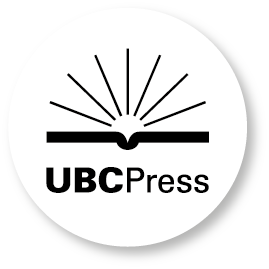Schooling Readers
Reading Common Schools in Nineteenth-Century American Fiction
University of Alabama Press
Schooling Readers investigates the fascinating intersection of two American passions: education and literature. Allison Speicher introduces readers to the common school narrative, an immensely popular genre of fiction—though now often forgotten—set in the rural one-room school in the nineteenth century.
Despite hailing from different regions with diverse histories and cultures, authors in all parts of the US produced remarkably similar school fictions. These stories, rather than offering idealized depictions of earnest schoolchildren in humble, rough-hewn schoolhouses, expose common schools as sites of both community bonding and social strife. These stories, Speicher shows, reflect surprisingly contemporary problems like school violence and apprehensions about assessments.
In four insightful sections, Speicher illuminates the plotlines that define the common school narrative: school exhibitions, in which common schools were opened to the public for a day of student performances; romances between teachers and students; violence against teachers; and teachers adopting their students. She offers rich examples from one hundred and thirty school stories by well-known authors such as Mark Twain, Bret Harte, Catharine Maria Sedgwick, and Edward Eggleston, as well as by educational reform pioneers such as C. W. Bardeen and long-forgotten contributors to nineteenth-century magazines.
By reading these fictions alongside the discourse of reformers like Horace Mann, Speicher illustrates the utility of fiction for uncovering the diverse reactions nineteenth-century Americans had to the expansion of public education as well as the role fiction played in shaping these responses. Throughout she maintains a dual focus, drawing on both literary and educational history, thereby offering much of value to those interested in either field.
Despite hailing from different regions with diverse histories and cultures, authors in all parts of the US produced remarkably similar school fictions. These stories, rather than offering idealized depictions of earnest schoolchildren in humble, rough-hewn schoolhouses, expose common schools as sites of both community bonding and social strife. These stories, Speicher shows, reflect surprisingly contemporary problems like school violence and apprehensions about assessments.
In four insightful sections, Speicher illuminates the plotlines that define the common school narrative: school exhibitions, in which common schools were opened to the public for a day of student performances; romances between teachers and students; violence against teachers; and teachers adopting their students. She offers rich examples from one hundred and thirty school stories by well-known authors such as Mark Twain, Bret Harte, Catharine Maria Sedgwick, and Edward Eggleston, as well as by educational reform pioneers such as C. W. Bardeen and long-forgotten contributors to nineteenth-century magazines.
By reading these fictions alongside the discourse of reformers like Horace Mann, Speicher illustrates the utility of fiction for uncovering the diverse reactions nineteenth-century Americans had to the expansion of public education as well as the role fiction played in shaping these responses. Throughout she maintains a dual focus, drawing on both literary and educational history, thereby offering much of value to those interested in either field.
Speicher not only revives an understudied literary tradition, but also illuminates a new way to value common school narratives and offers a new archive of materials for historians. Schooling Readers engages with concerns important to both literary studies and history of education, as Speicher considers what we can learn from these texts, how these texts are shaped by their contextual moments, and how these texts speak back to and impact broader cultural conversations. Speicher’s study offers compelling and necessary insights into the early experiments of common school reform as we, in the twenty-first century, continue to negotiate the meanings, purposes, and roles of schooling.'
—The Lion and the Unicorn
'Speicher outlines and provides examples of four basic plots that recur in the narratives: exhibitions and spelling bees to prove competence, school violence with corporal punishment and older boys’ resistance, male teachers falling in love with and marrying their female students, and teachers assuming parental roles (usually female teachers as mother figures). Speicher emphasizes the fact that authors hoped not only to entertain their readers but also to promote longer school sessions; better quarters, books, and equipment; and teacher training. She also points out that 19th-century readers saw these situations far differently than do 21st-century readers. The book covers new ground, is well written, and maintains the reader’s interest. Summing Up: Recommended.'
—CHOICE
'Speicher’s study brings attention to an often overlooked area of literature and its role in school reform. Those interested in nineteenth-century American fiction, particularly its depictions of school life, will find an important contribution to the field, one that crosses disciplinary lines to make a credible and refined argument about literature, school reform, and attitudes toward class, gender, and race.'
—The Journal of American Culture
‘Schooling Readers will fascinate literary critics as well as historians of education. Speicher has performed a great scholarly service in assembling and providing as an appendix an ample bibliography of common school narratives; this will facilitate future research in this compelling area of study, as will the nature of the book’s chapter topics.’
—Patricia Roylance, author of Eclipse of Empires: World History in Nineteenth-Century U.S. Literature and Culture
Speicher not only revives an understudied literary tradition, but also illuminates a new way to value common school narratives and offers a new archive of materials for historians. Schooling Readers engages with concerns important to both literary studies and history of education, as Speicher considers what we can learn from these texts, how these texts are shaped by their contextual moments, and how these texts speak back to and impact broader cultural conversations. Speicher’s study offers compelling and necessary insights into the early experiments of common school reform as we, in the twenty-first century, continue to negotiate the meanings, purposes, and roles of schooling.'
—The Lion and the Unicorn
'Speicher outlines and provides examples of four basic plots that recur in the narratives: exhibitions and spelling bees to prove competence, school violence with corporal punishment and older boys’ resistance, male teachers falling in love with and marrying their female students, and teachers assuming parental roles (usually female teachers as mother figures). Speicher emphasizes the fact that authors hoped not only to entertain their readers but also to promote longer school sessions; better quarters, books, and equipment; and teacher training. She also points out that 19th-century readers saw these situations far differently than do 21st-century readers. The book covers new ground, is well written, and maintains the reader’s interest. Summing Up: Recommended.'
—CHOICE
'Speicher’s study brings attention to an often overlooked area of literature and its role in school reform. Those interested in nineteenth-century American fiction, particularly its depictions of school life, will find an important contribution to the field, one that crosses disciplinary lines to make a credible and refined argument about literature, school reform, and attitudes toward class, gender, and race.'
—The Journal of American Culture
‘Schooling Readers will fascinate literary critics as well as historians of education. Speicher has performed a great scholarly service in assembling and providing as an appendix an ample bibliography of common school narratives; this will facilitate future research in this compelling area of study, as will the nature of the book’s chapter topics.’
—Patricia Roylance, author of Eclipse of Empires: World History in Nineteenth-Century U.S. Literature and Culture
Schooling Readers is an important contribution to our understanding of how literature not only informed the arguments concerning education for a democracy but also how it functioned as an instrument of education.’
—Mary Louise Kete, author of Sentimental Collaborations: Mourning and Middle-Class Identity in Nineteenth Century America and coauthor of the Women’s Worlds: The McGraw-Hill Anthology of Women's Writing
Schooling Readers is an important contribution to our understanding of how literature not only informed the arguments concerning education for a democracy but also how it functioned as an instrument of education.’
—Mary Louise Kete, author of Sentimental Collaborations: Mourning and Middle-Class Identity in Nineteenth Century America and coauthor of the Women’s Worlds: The McGraw-Hill Anthology of Women's Writing
Allison Speicher is an assistant professor of English, teaching nineteenth-century American literature and children's literature at Eastern Connecticut State University.









